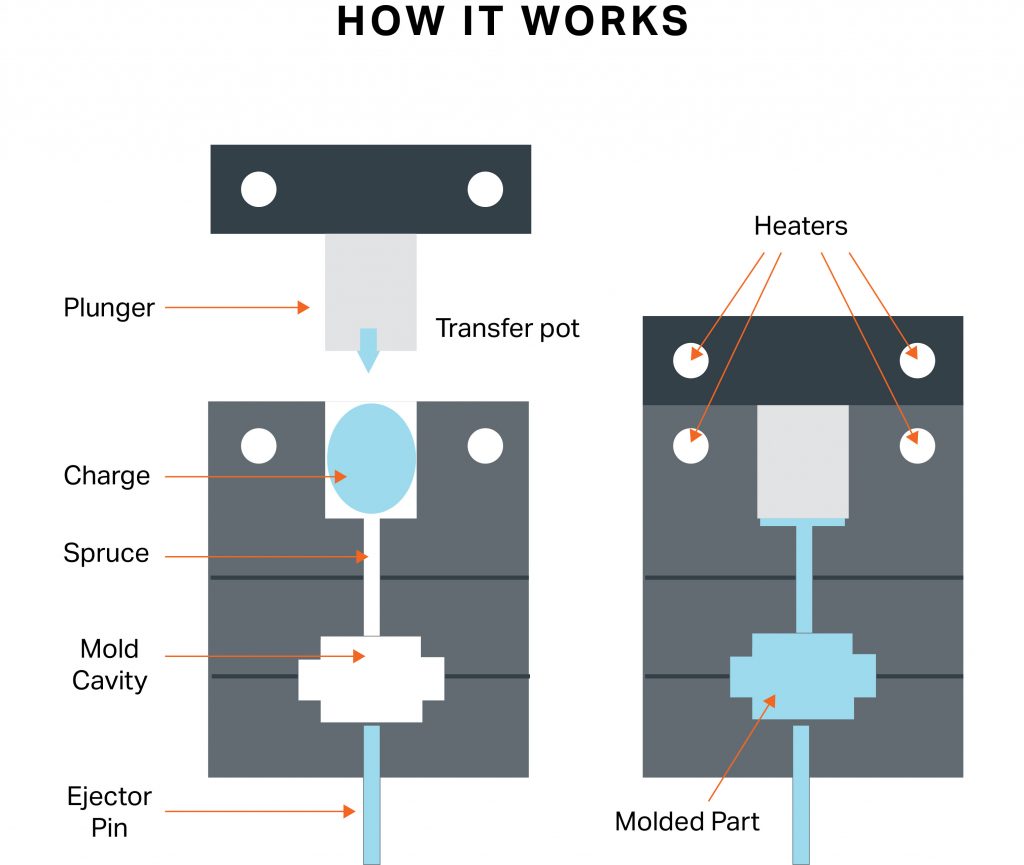In the ever-evolving landscape of electronics manufacturing, innovation plays a pivotal role in enhancing the performance, durability, and reliability of electronic components. One such innovation that has garnered significant attention is the process of transfer molding. This advanced technique has revolutionized the way electronic components are encapsulated and protected, providing a range of benefits that span from efficient heat dissipation to mechanical stability.
Understanding Transfer Molding: The Basics
Transfer molding is a manufacturing process that involves encapsulating electronic components, such as solenoid coils, within a protective housing made of plastic. This method serves as a cornerstone in creating robust and resilient components that can withstand various environmental conditions and demands. The process revolves around precision and meticulous execution, ensuring that each encapsulated component meets the highest standards of performance.
The Process Unveiled: Step by Step
- Mold Preparation: The process begins with the preparation of a mold. This mold consists of a cavity that mirrors the size and shape of the electronic component to be encapsulated. Crafted from metal, the mold is designed to facilitate easy removal of the final product. Heaters installed within the mold maintain the tooling at a specific temperature required to cure the plastic that will be injected.
- Loading the Mold: The electronic component, whether it’s a solenoid coil or other delicate element, is carefully placed into the mold cavity. Any required connectors, wires, or auxiliary components are positioned with precision. The transfer molder is then actuated to close around the electronic component and move into position in preparation for the introduction of the plastic material.
- Injection of Plastic: Plastic material in to form of pucks, pellets, or granules is pre-heated to a specific temperature using a Radio Frequency Pre-Heater. The pre-heated plastic is then inserted into the receptacle on the transfer molder where a plunger or similar mechanism compresses the plastic, forcing it through the tooling and into the electronic component.
- Compression and Curing: Constant pressure applied by the transfer molder forces the plastic through the electronic component. Vents that are built into the mold allow all air to escape. Excess plastic extends into the vents providing evidence that all air has been purged and the electronic component is encapsulated. A timer maintains the mold in this position until the plastic material is cured.
- Unveiling the Final Product and Cooling: After the plastic has cured the mold is opened and shuttled forward so the electronic component can be carefully extracted. The electronic component and tooling are cleaned to remove any residual plastic. The electronic component is set aside to cool and the process is repeated for the next part. At this point, the plastic has hardened and our electrical component is now one solid piece that enhances longevity and performance under harsh conditions.
Advantages Beyond Boundaries
The advantages of transfer molding are far-reaching and hold the potential to transform industries. Some of the most notable benefits include:
- Efficient Heat Dissipation: Transfer molding offers an ingenious solution for components that generate heat, such as solenoid coils. By filling voids with plastic, the plastic acts as a conduit for heat transfer, preventing overheating and optimizing performance.
- Mechanical Fortitude: The protective plastic housing created through transfer molding bestows electronic components with the stability they need to endure mechanical stress, impact, and diverse environmental factors.
- Customization Precision: The flexibility of mold design in transfer molding enables tailoring the encapsulation to suit specific shapes and sizes of components, resulting in meticulous customization and precision.
- Uniform Excellence: Transfer molding guarantees uniform encapsulation and uniformity in plastic distribution, ensuring consistent properties throughout the component’s housing.
As industries ranging from electronics and automotive to aerospace continue to push the boundaries of innovation, transfer molding stands as a testament to how technology can elevate electronic components to new heights of performance and reliability. This sophisticated process bridges the gap between cutting-edge technology and real-world applications, offering a glimpse into a future where electronics thrive under even the harshest conditions. The intricate dance of science, engineering, and craftsmanship within transfer molding is a reminder that innovation is not just about creating something new but about perfecting what already exists.
